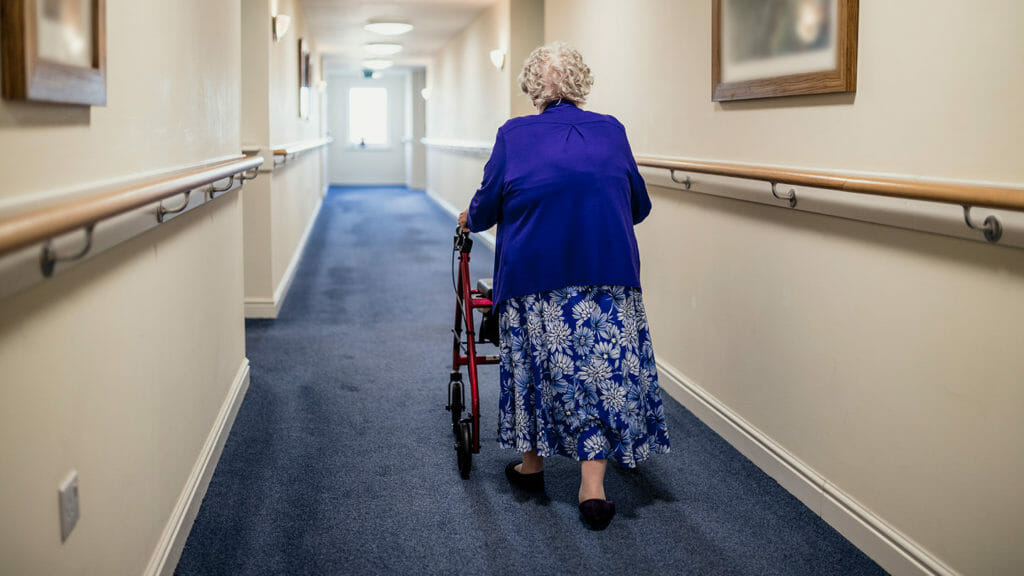
The nursing home sector may be far ahead of where it was at this time last year as far as operational freedoms and safety go, but the continuing instability caused by the COVID-19 pandemic is perhaps no better embodied than by the actual number of beds now being offered.
Nobody knows what that exact number is.
Nor do major stakeholders seem to know when, or how, it will be established.
They do know, however, that more help is needed, which puts them in a Catch-22, as one analyst sees it. Without a firm grasp on occupancy levels, nursing home advocates are unable to fully articulate what is needed.
The largest nursing home association and lobbying group agrees there are uncertainties.
“Occupancy rates may not give a full picture of how the industry is faring right now, but it’s about the best we have at the moment,” the American Health Care Association/National Center for Assisted Living told McKnight’s in a statement sent to McKnight’s. “The fact that occupancy rates have essentially flatlined since July is telling of the ongoing economic crisis.”
At the center of this high-priced debate is what one prominent industry expert calls a “quirk” that, he says, has providers inadvertently casting themselves in a healthier position than they are, thus costing them bargaining leverage with federal policy makers.
National nursing home occupancy is below 70%, not above 72% as is popularly touted, Zimmet Healthcare Services Group President and CEO Marc Zimmet told McKnight’s earlier this week. The hangup comes because some facilities have voluntarily taken beds, wings or floors offline and wrongly not reported them as part of available possible capacity.
Zimmet doubled down Thursday on his projection that at least 55,000 beds have been taken out of service since the pandemic started, a number numerous others have characterized as likely too high.
“If anything, my number is understated,” he told McKnight’s. “55,000 mothballed beds comes out to 3.7 beds per facility. That’s a no-brainer. The question is the progression — how many more are taken offline each month. If I had to guess, the number of inactive beds exceeds 100,000. It is anecdotal but unassailable that total SNF usable inventory is at least 50,000 beds below the certified total.”
The two major U.S. nursing home associations acknowledged they are uncertain of the volume of beds that have been inactivated, as well as how fast or how high the number may climb.
“While we don’t have precise data on how many beds or wings are being taken offline, many providers are having to limit the number of residents they serve due to staffing and financial challenges,” AHCA/NCAL said in its comments. “From a recent [September] survey we conducted, we know that 58% of nursing homes are limiting new admissions.”
The group said the main reason for that is a lack of staffing; more than two-thirds (69%) of survey respondents said it was “very difficult” to recruit employees.
Executive survey data shared by NIC on Thursday showed the same. Nearly half of operators with multiple properties reported staffing shortages between Nov. 8 and Dec. 5, NIC said.
LeadingAge leaders found much the same in an October survey of its members. That revealed that 40% of operators had had to restrict admissions and 25% had shut down units, neighborhoods or buildings, again due to insufficient staffing availability.
“Not only is a workforce shortage impacting our ability to recover, but we’re also dealing with price gouging by temporary staffing agencies and inflation increasing their other operating costs,” AHCA added. “It’s not sustainable unless government officials step up and provide aid.
“If state and federal policymakers don’t offer immediate assistance, we’re concerned that we’ll see this economic and workforce crisis deepen in Q1 2022, especially with more facility closures,” it continued. “Ultimately, this will have devastating consequences for our nation’s seniors, limiting their access to care.”
Zimmet maintains providers can help themselves by more accurately documenting how truly low census levels appear to be. Many providers are reporting only “staffed” or “active” bed numbers, not necessarily full certified levels, to the federal NHSN database, he noted. He calls it “a clerical error that only hints at the overall issue.”
According to his calculations, the country’s nursing homes have regained just less than 39% of the occupancy lost since bottoming out at 67.5% in December 2020. His company’s EcapINTEL database details a “Recovery Index” for each state. Results range from a still-bottoming out Oregon to Nevada, which has “gained back everything.” Other examples include West Virginia having gained back 82% of its lost census while Illinois and Mississippi both sit at just 31%.
EcapINTEL analysts also have projected how many months each state might need to return to pre-pandemic levels, given recent statistical gains, provided steady improvements continue. California is projected at 10 months while Mississippi and Illinois might expect 13 months each; Pennsylvania, 15 months; and Oregon, 20 months).




